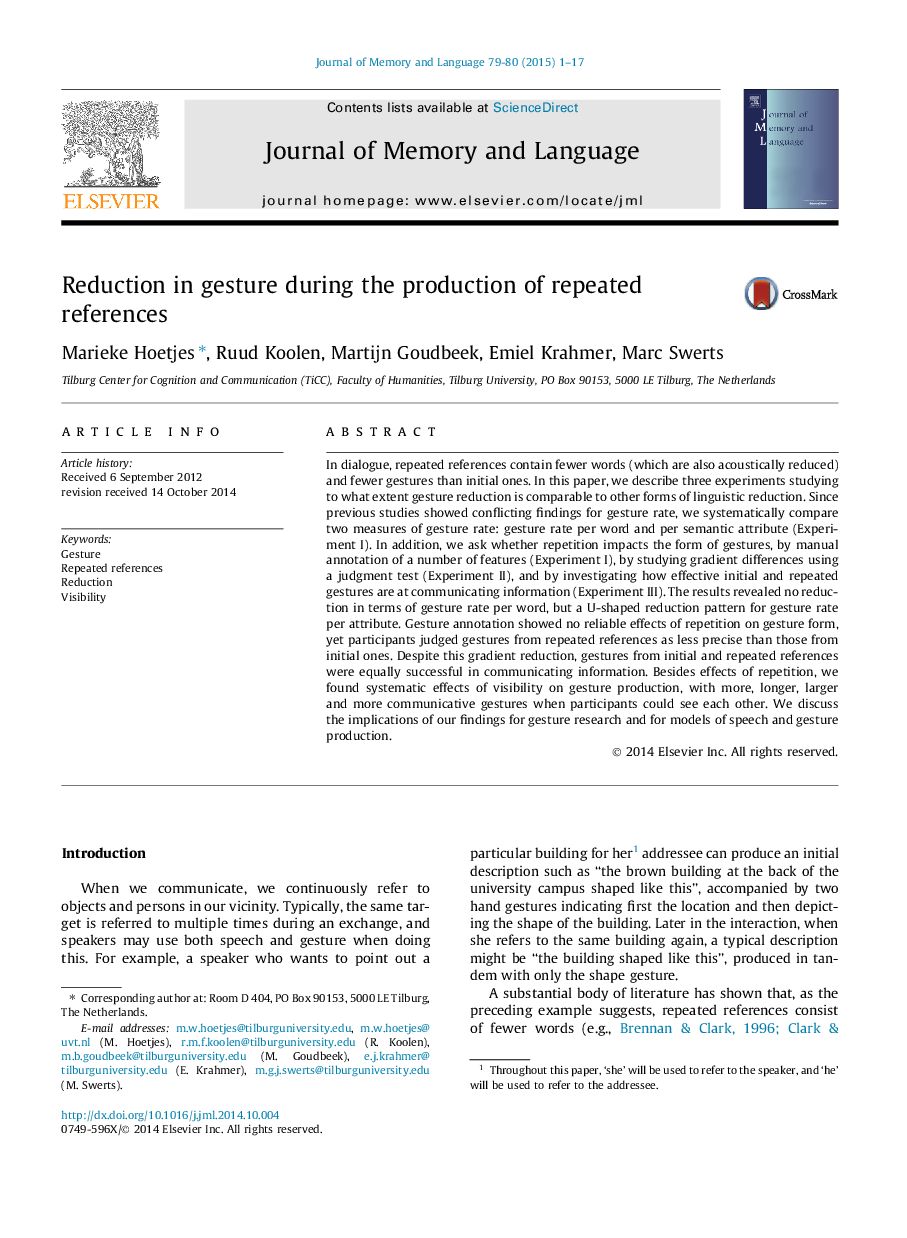| Article ID | Journal | Published Year | Pages | File Type |
|---|---|---|---|---|
| 7297088 | Journal of Memory and Language | 2015 | 17 Pages |
Abstract
In dialogue, repeated references contain fewer words (which are also acoustically reduced) and fewer gestures than initial ones. In this paper, we describe three experiments studying to what extent gesture reduction is comparable to other forms of linguistic reduction. Since previous studies showed conflicting findings for gesture rate, we systematically compare two measures of gesture rate: gesture rate per word and per semantic attribute (Experiment I). In addition, we ask whether repetition impacts the form of gestures, by manual annotation of a number of features (Experiment I), by studying gradient differences using a judgment test (Experiment II), and by investigating how effective initial and repeated gestures are at communicating information (Experiment III). The results revealed no reduction in terms of gesture rate per word, but a U-shaped reduction pattern for gesture rate per attribute. Gesture annotation showed no reliable effects of repetition on gesture form, yet participants judged gestures from repeated references as less precise than those from initial ones. Despite this gradient reduction, gestures from initial and repeated references were equally successful in communicating information. Besides effects of repetition, we found systematic effects of visibility on gesture production, with more, longer, larger and more communicative gestures when participants could see each other. We discuss the implications of our findings for gesture research and for models of speech and gesture production.
Keywords
Related Topics
Life Sciences
Neuroscience
Cognitive Neuroscience
Authors
Marieke Hoetjes, Ruud Koolen, Martijn Goudbeek, Emiel Krahmer, Marc Swerts,
